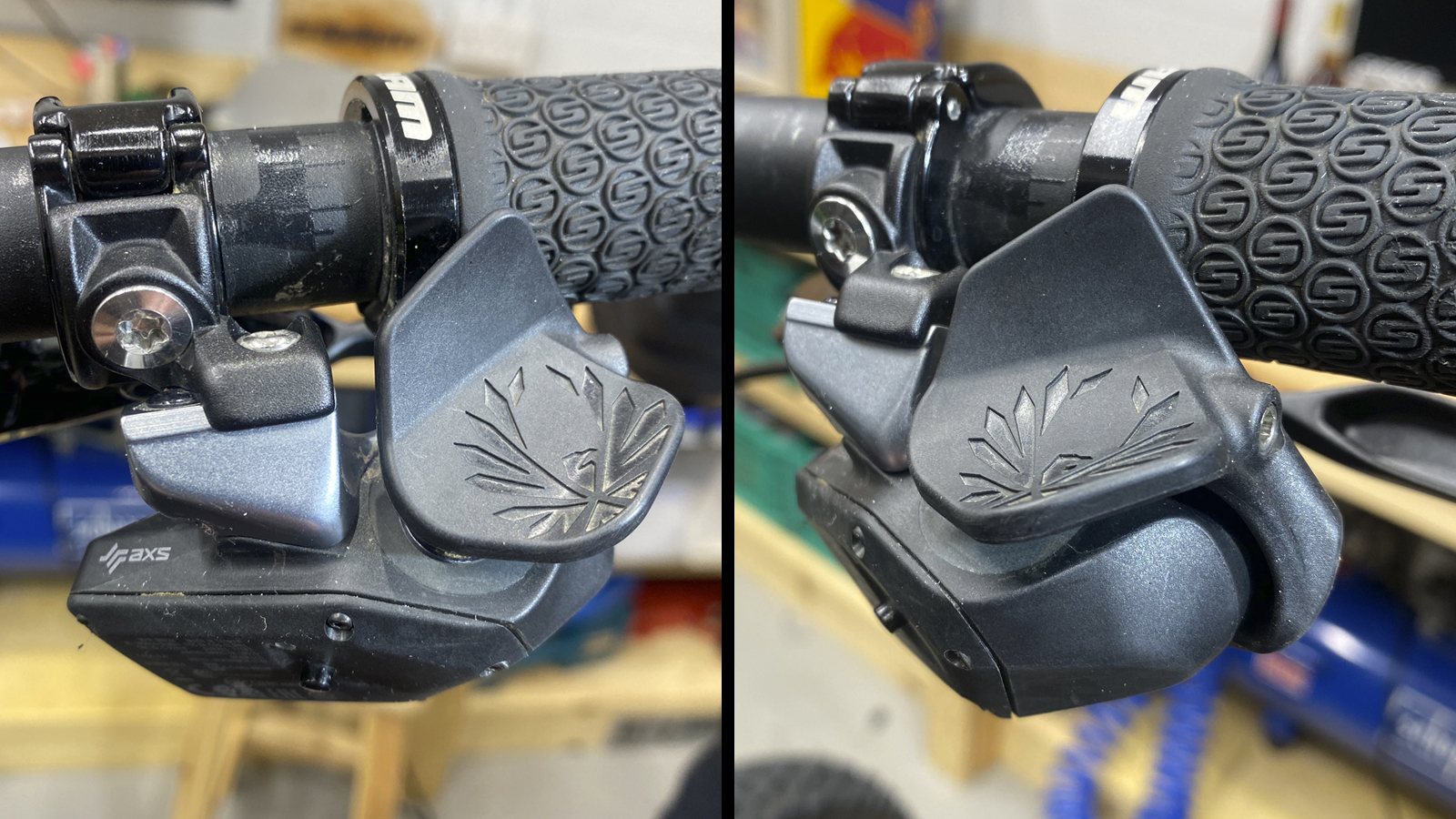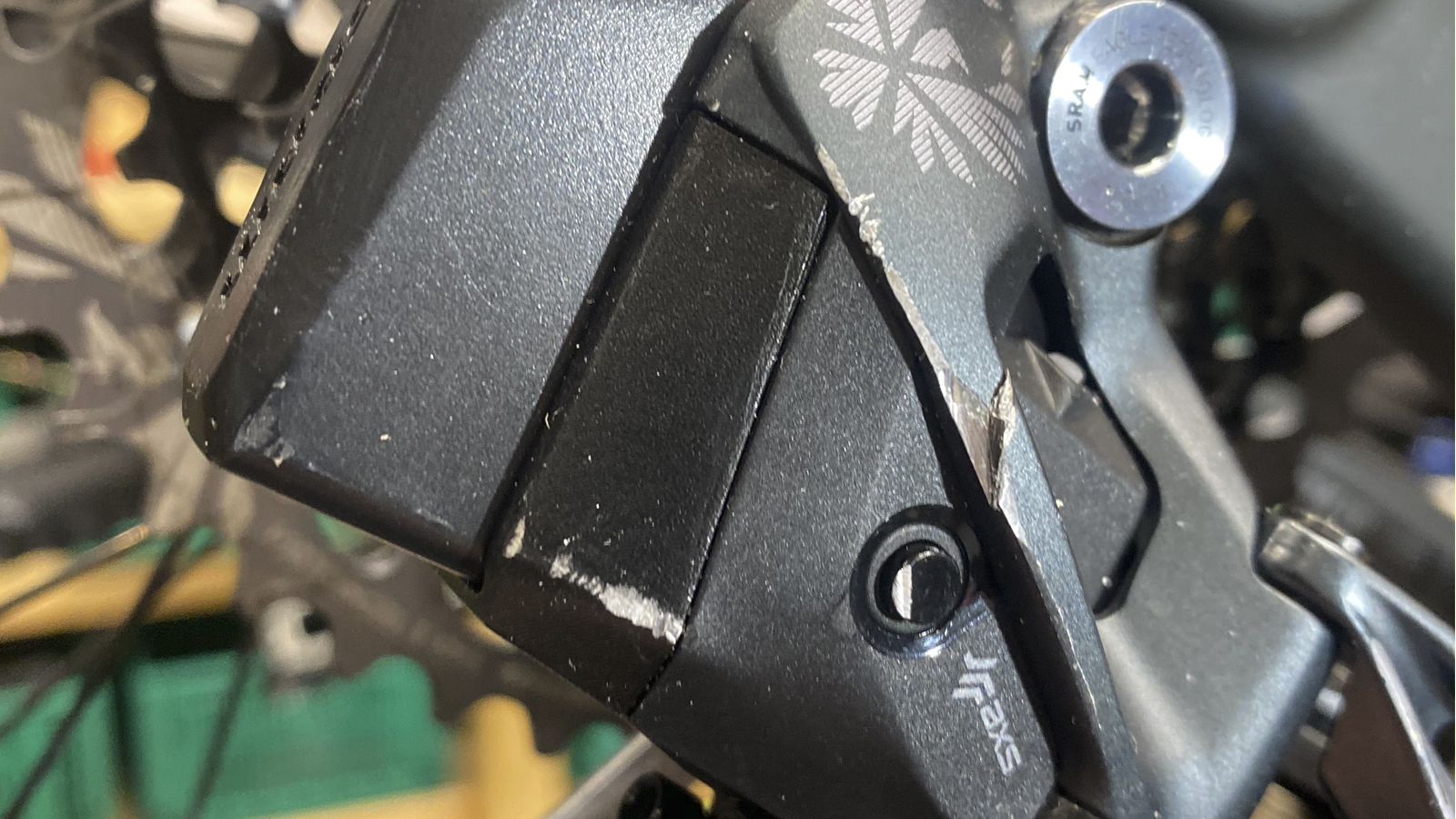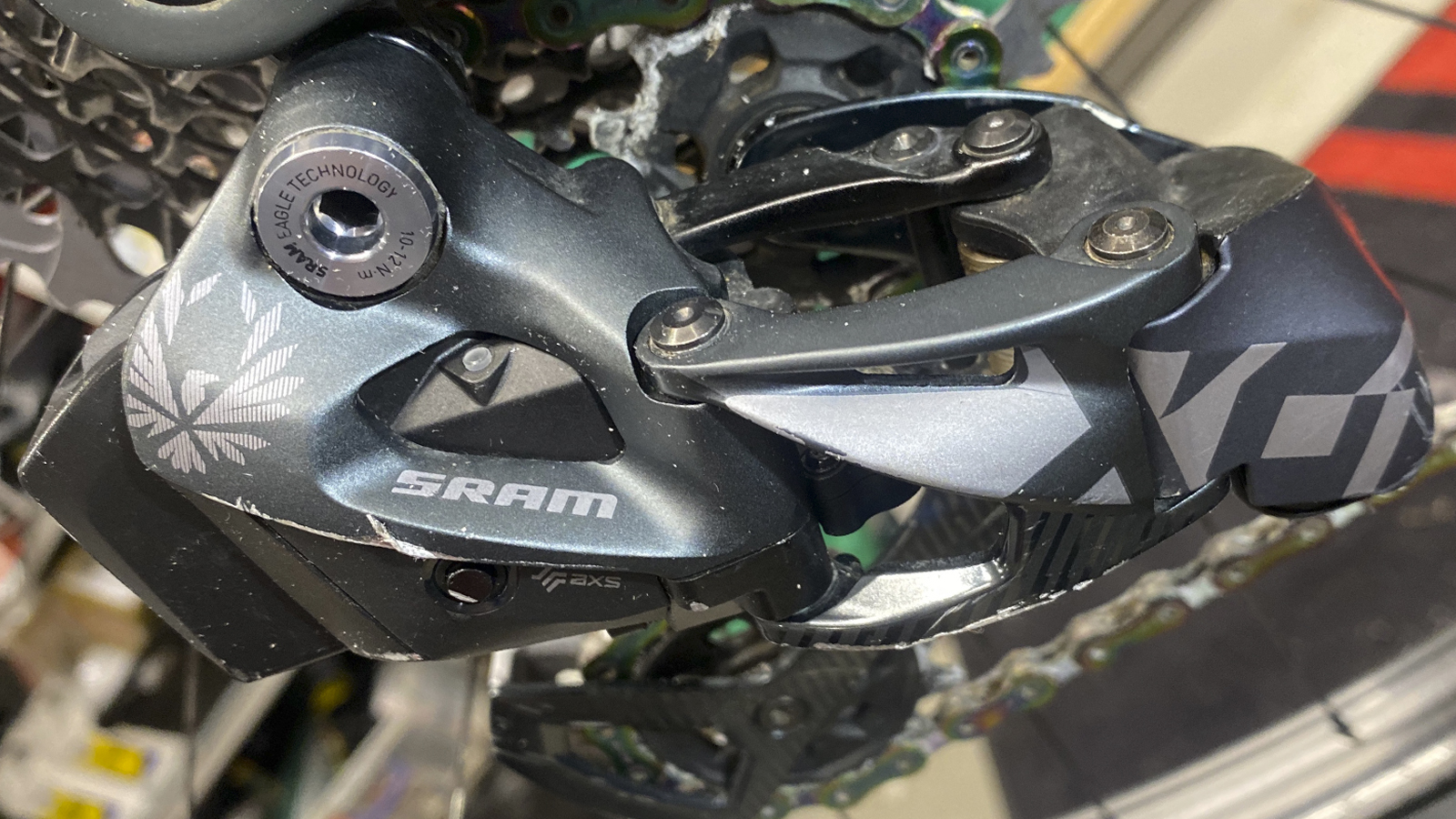Bike Perfect Verdict
If you want a sharper, lighter, cleaner and more versatile shifting system and you can afford the best, SRAM’s AXS sets a whole new benchmark
Pros
- +
Consistent, accurate and efficient shifting
- +
Simple to setup
- +
Cable-free aesthetic
Cons
- -
Expensive
Why trust BikePerfect
Even after a year in public and a lot longer in clear view development on the bikes of some of the World’s fastest racers, SRAM’s Eagle AXS XX1 and X01 is still the only electrically actuated 12-speed transmission set-up. It’s the only wireless one, too. The XX1 version is also lighter than conventional XX1, 11-speed XTR Di2 and the latest 12-speed analogue XTR by five, 150 and 120 grams respectively. In short, it’s still in a class of its own. That does come at a premium of £500 over analogue XX1 and XTR though.
Construction
The rear mech is the heart of the system and comes in 375g XX1 (carbon jockey wheel cage outer plate) or 390g X01 (full alloy jockey wheel cage) versions. Both use the same tiny motor inside the parallelogram and universal AXS clip-in battery on the back of the body. As well as a roller-bearing clutch to keep the chain settled there’s an ‘Overload Clutch’ that disconnects the motor to stop gearbox damage if the mech gets clouted. From our own experience and the number of significantly scarred AXS mechs we’ve seen that are still shifting fine, it works extremely well to protect your £700/£670 investment. The cage on the AXS mech is also 10mm shorter to improve ground clearance.
The shifter body is smaller and lighter (85g) than the analogue version but uses one big rocker paddle that you can trigger three different ways. You can configure what those clicks do in terms of up/down and the number of shifts through the AXS smartphone app. It can be mounted directly onto Matchmaker brake clamps or sit on its own bar clamp and it’s powered by a CR2032 coin battery.

The chainset, chain and cassette are the same as analogue XX1/X01 and the shifter and mechs will work with any Eagle set-up right down to SX. That makes the AXS upgrade kit (derailleur, shifter, batteries and charger) for £975 the smart choice if you’ve already got a SRAM Eagle transmission. You can’t currently buy bits separately outside of crash replacement schemes though.
Fitting
Unsurprisingly, AXS Eagle is coming pre-fitted on a lot of flagship bikes now, but that’s almost a shame as fitting the system is one of the sweetest parts of the whole deal.
Compared to cutting cables, fitting ferrules and fighting with internally routed cable installation, just bolting the rear mech and shifter into place is an absolute joy. A mech positioning template is provided to make sure cassette clearance is spot-on and the limit screws work in the normal way.
Pairing via the smartphone app is super simple and you can configure operation modes at the same time. While most setups seem to be fine from installation, you can micro-adjust the electronic indexing by depressing the AXS switch and toggling the shifter paddle at the same time.
AXS communication works right across SRAM road groupsets too, so gravel bike riders can use an Eagle set-up with drop-bar shifters, or you can even add miniature secondary blip buttons if you’re using a funky bikepacking bar set-up. Hell, you could even dig out some bar ends from 25 years ago, stick some shift buttons on them and start a retro-race revival.
Jokes aside, the other great thing about AXS is how clean it leaves your cockpit, especially if you run a Reverb AXS dropper post, too. That becomes even more obvious when you start trying to fit numbers for racing or lights for night riding and you realise how much cables normally get in the way.
Operation
While installation is a simple and a very swift process to anyone remotely ‘smart’ savvy, getting used to the system on the bike can take a bit longer.
While there is a lightly sprung, click feel to let you know you’re shifting, minimal actuation movement and instant reaction makes it much easier to miss-shift than an analogue system with more movement. Because every shift feels the same there’s no tactile pre-shift feedback that you’re accidentally going the wrong way or getting towards the end of the range either. That makes it well worth spending time playing around with different shifter positions and click configurations to get it working exactly how you want it to.
In terms of the actual shift, it’s no faster than a fresh top-quality cable set-up across single shifts. It’s slower across multiple changes than just bullying the mech across with a strong thumb or rapid-fire finger, too. Compared to XTR neither electric nor analogue SRAM shifts quite as well if you’re hard on the power, although arguably that’s about self-protection when you shouldn’t shift anyway.
SRAM’s claimed 25-hour battery life guideline seems to be a conservative estimate, although that obviously depends on how much you shift, age of the battery and what temperatures you’re riding in.

The big difference compared to analogue is that the shifts are utterly consistent, precise and super light because they’re always executed at the most efficient moment. There’s a definite psychosomatic effect where the super clean and accurate shifting permeates into the rest of the ride making the whole bike feel more precise and efficient. They stay that way however rowdy or filthy conditions get and even heavily used early sets we’ve tried feel no different to fresh sets. A full charge only takes an hour so you don’t have to remember too far in advance if you ran it low last ride.
Reliability reports from every AXS user we know - including some very cynical pro testers - have also been flawless. Because it’s programmed to only shift at the optimum moment chain and cassette life should be increased too, although that’s harder to quantify at this stage. SRAM is also planning to add diagnostic and servicing feedback to the AXS ecosystem that’s likely to be geared more to road users at first.

Verdict
Let’s not forget SRAM Eagle is already a superb benchmark shifting set-up. Batteries and wireless connection will always add more potential issues than cables, and AXS systems cost 25 per cent more than their conventional equivalents. Some people might just prefer the physical feedback of analogue compared to a clinical button click too.
What Eagle AXS delivers though is more consistent, accurate and efficient shifting that flatters and sharpens the feel of the whole bike. From a practical and aesthetic point installation is massively simplified, your handlebars are dramatically cleaned up and the amount of shift customisation is next-level. While the actual AXS components are only top-dollar items currently, it’s compatible with any 12-speed SRAM transmission and you can even plug-and-play between different MTB, gravel bikes or road bikes in a matter of minutes. It weighs less than conventional transmission setups, it’s world-title proven in both cross-country and enduro disciplines and real-world reliability is proving equally impressive.
In short, if you want a sharper, lighter, cleaner and more versatile shifting system and you can afford the best, SRAM’s AXS sets a whole new benchmark.
Tech Specs
- Rear mech with battery: XX1 375g, X01 390g
- Shifter with battery: 85g

Guy Kesteven has been working on Bike Perfect since its launch in 2019. He started writing and testing for bike mags in 1996. Since then he’s written several million words about several thousand test bikes and a ridiculous amount of riding gear. He’s also penned a handful of bike-related books and he reviews MTBs over on YouTube.
Current rides: Cervelo ZFS-5, Specialized Chisel, custom Nicolai enduro tandem, Landescape/Swallow custom gravel tandem
Height: 180cm
Weight: 69kg

